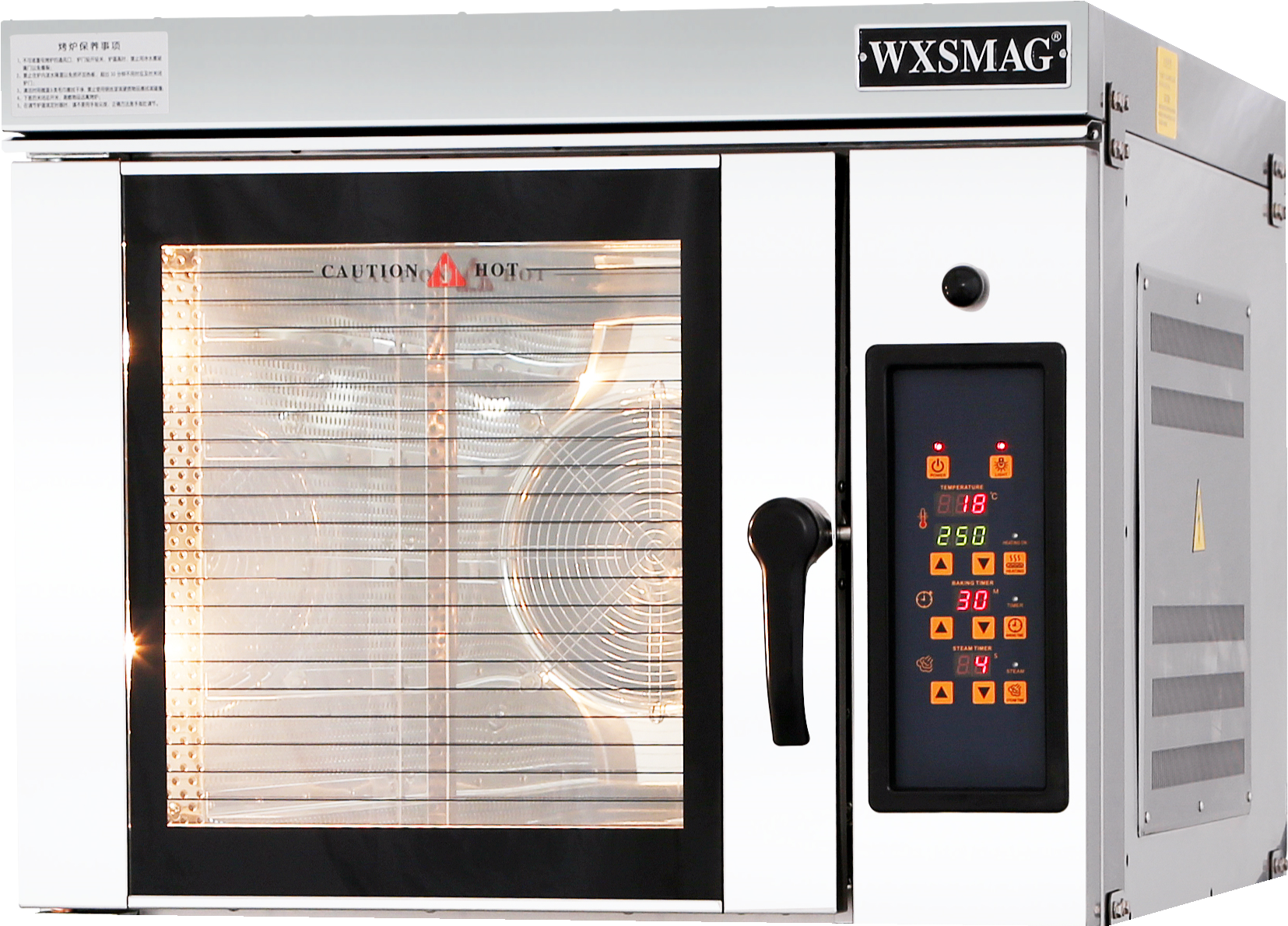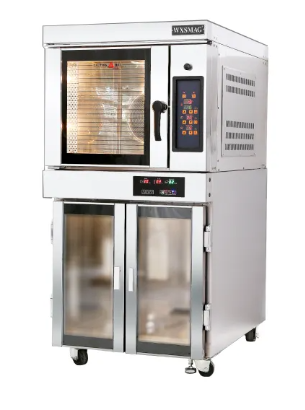Fire Safety Compliance for Hot Air Oven Environments
Commercial kitchens using hot air ovens must prioritize fire safety compliance to mitigate risks posed by high-temperature operations. Modern thermal management protocols combine engineered safeguards with operational best practices to address 72% of preventable fire incidents linked to overheating (NFPA 2023).
Overheating Prevention Through Automated Suppression Systems
In combat, automatic fire-suppression systems are activated by infrared sensors upon detecting abnormal temperature readings and deploy localized chemical agents to extinguish flames in only 1.2 seconds. These devices are superior to manual responses as they isolate heat sources from going into fire condition with the goal of suppressing fires before they reach ignition temperatures – even a 500°F (260°C) grease fire ignition temperature. Testing the emergency shutoff valves and the nozzle integrity are part of standard NFPA 96 for commercial heat appliances.
Clearance Distances and Combustible Material Storage Standards
Maintain a 36-inch clearance radius around ovens for airflow circulation and emergency access. Storage of flammable materials follows strict zoning:
- Liquids: Minimum 8 ft horizontal separation from heat sources
- Packaging: Fire-rated cabinets rated for 350°F minimum exposure
- Ventilation paths: Unobstructed 18-inch vertical buffer below exhaust ducts
Quarterly audits verify compliance with OSHA 1910.262(a)(3) spacing rules, reducing fire spread risks by 89% compared to ad-hoc layouts.
Ventilation Requirements for Hot Air Oven Heat Management
Proper ventilation prevents heat stratification and reduces fire risks in commercial kitchens. Strategically placed exhaust systems must remove 70-80% of oven-generated heat while maintaining energy efficiency.
Airflow Velocity Benchmarks for Kitchen Air Exchange
You need to get 15-20 air changes per hour in a commercial kitchen to keep the heat down from those hot air ovens. ANSI/ASHRAE standards specify 400-600 FPM (feet per minute) flow velocity at the exhaust hoods needed to capture the heat. Oversized ducts drop the velocity to less than 350 fpm and the airborne grease particles settle and fire danger is maximized. Zoned ventilation – with twice as many blower options – provides the power necessary to efficiently vent all the cooking areas in today's cooktops and ranges with multiple ovens.
Grease Filtration Maintenance Schedules in Vent Hoods
Mesh filters require weekly degreasing in high-output kitchens, while baffle filters need bi-monthly soak-cleaning in alkaline solutions. Industry guidelines mandate replacing filters showing:
- Visible warping exceeding 1/8" deflection
- Over 10% surface corrosion
- Gasket deterioration allowing airflow bypass
Four-stage filtration systems integrating centrifugal grease separators reduce duct maintenance frequency by 40% compared to traditional setups. Quarterly infrared scans of duct interiors help detect early-stage grease accumulation missed during visual inspections.
Temperature Control Mechanisms in Commercial Hot Air Ovens
Precise temperature regulation forms the backbone of safe and efficient operations in commercial hot air ovens. Modern systems combine hardware precision with digital oversight to maintain consistent thermal performance across baking, sterilization, and industrial processes.
Bi-annual calibration protocols for thermostat accuracy
For commercial facilities, semi-annual thermostat calibration is performed to retain temperature swings less than ±2°F (±1.1°C). This consists of verifying the sensor response to NIST-traceable reference instrumentation and fine-tuning PID (Proportional-Integral-Derivative) controller set points. Uncalibrated ovens were reported to exhibit 9 F temperature drift after 6 months based on a commercial bakery study in 2023, which directly resulted in 14% increased product rejection rates. Technicians typically:
- Verify door seal integrity during calibration
- Test all heating zones independently
- Document baseline performance metrics
Real-time thermal monitoring through IoT sensors
Oven cavity-based Internet of Things (IoT) sensors offer second by second monitoring of temperature mapping through data streams oiling into a centralised facility management system. Sensing the slightest ±0.5°F deviation from set point temperatures at supply and return, sophisticated models automatically adjust airflow through built-in damper controls. At a pharmaceutical testing lab, during a 12-month pilot, IoT-enabled ovens reduced thermal-excursion incidents by 63% versus legacy units — and reduced energy waste from over-cooling by 22%. These solutions allow for predictive maintenance warning if components are experiencing early signs of thermal stress.

Staff Safety Training for Hot Air Oven Operations
Effective staff safety training reduces workplace injuries by 42% in commercial kitchens using heat-intensive equipment (National Restaurant Association 2023). Training programs must balance operational efficiency with OSHA compliance standards, particularly when handling ovens operating above 500°F (260°C).
Onboarding Programs Addressing 90% of Common Accident Scenarios
Structured onboarding curricula target the primary risks associated with hot air ovens:
- Thermal burns from improper door handling during steam release cycles
- Respiratory hazards due to inadequate PPE during high-temperature cleaning
- Equipment malfunctions caused by incorrect startup/shutdown sequences
Industry studies show that programs covering these scenarios during orientation reduce first-year incident rates by 58%. Training simulations using decommissioned ovens help kitchen staff recognize warning signs like irregular airflow patterns or delayed thermostat responses before operational use.
Emergency Response Drills for Oven-Related Incidents
Quarterly emergency drills improve response times by 65% in commercial kitchen environments. Mandatory drills should include:
- Fire suppression system activation protocols specific to convection-fueled flames
- Evacuation procedures accounting for oven placement in high-traffic areas
- Post-incident reporting workflows for compliance documentation
Recent data indicates kitchens conducting bimonthly drills experience 73% fewer OSHA violations related to heat equipment (Commercial Kitchen Safety Report 2024). Scenario-based training using thermal imaging mockups helps staff identify smolder stages before open flames develop.
Preventative Maintenance for Commercial Hot Air Ovens
Quarterly inspection checklists addressing wear patterns
Systematic quarterly inspections reduce equipment failure risks by 52% in commercial kitchens (NSF 2023). Focused checklists should monitor:
- Heating elements for discoloration or oxidation patterns
- Door gaskets for flexibility loss exceeding 15% compression tolerance
- Circulation fans showing vibration levels above 2.5 mm/s (ISO 10816 standards)
A 2023 Material Degradation Study found that 37% of oven failures stem from unaddressed wear in door seals and heating coils. Technicians should document thickness reductions in thermal insulation and lubrication intervals for motor bearings using standardized templates.
Third-party certification requirements for electrical components
Regulatory bodies mandate annual recertification of oven electrical systems by accredited inspectors. Critical certifications cover:
- Grounding continuity below 0.1Ω resistance (UL 1977 compliance)
- Overcurrent protection response times under 0.8 seconds
- Wiring insulation integrity at 150% of rated voltage
Non-certified components contribute to 28% of electrical fires in commercial ovens (NFPA 2022). Facilities using third-party-certified parts report 64% fewer code violations during safety audits compared to those using untested replacements.
Industry Compliance Paradoxes in Hot Air Oven Safety
The productivity vs. safety dichotomy in rush-hour operations
Hot air oven safety measures often contradict against when peak time production orders in caterer kitchens. In order to meet deadlines, personnel tend to bypass thermal cutoff switches or overfill oven chambers, in direct violation of NFPA 96 ventilation regulations. OSHA stats say that you have a 34% higher likelihood of a thermal burn accident in the middle of the lunch/dinner rush if you're cutting corners on safety. On one hand, managers are having to balance throughput targets against non-negotiable fire prevention measures such as automatic shutdown systems. It is paramount, however, that routine safety inspections continue to ensure compliance without compromising productivity.
Conflicting regional regulations on maximum operating temperatures
Compliance issues are particularly challenging for operators as different temperatures limits apply by jurisdiction for industrial ovens. On one hand, the EU-enforced upper limits for allergen reduction are 250°C, while some US states allow for 315°C baking through the FDA exemption—a 26% variation resulting in operational discontinuity. 'Global manufacturers will need to regionalise oven firmware and document twoprongs of compliance. This fragmentation makes maintenance programs more burdensome and training more expensive, by around 18% for multi-site operators, based on 2023 restaurant safety surveys.
Emerging trends in AI-powered hazard prediction systems
Contemporary thermal monitoring systems are finding solutions to the need to weigh performance versus safety by incorporating predictive analytics. IOT sensors monitor heat distribution and energy usage in real time, and AI algorithms correlate that data with NFPA clearance standards and previous incident reports. Equipment is able to predict part failures up to 72 hours ahead of time with 89% accuracy (FoodTech Journal 2023), adjusting cooking cycles to reduce chances of food overheating. This allows for ‘ahead of the fault’ maintenance to be performed during off peak hours without violating the safety of the hot air oven.
Frequently Asked Questions
What are the key components of fire safety compliance for hot air ovens?
Fire safety compliance involves using automatic fire-suppression systems, maintaining clearances for combustible materials, and conducting regular audits and maintenance as per regulatory standards.
How are temperature control mechanisms used in hot air ovens?
Temperature control mechanisms include bi-annual calibration of thermostats and real-time monitoring through IoT sensors to ensure consistent and safe oven operation.
What training programs are essential for staff operating hot air ovens?
Staff training programs should focus on preventing common accidents related to hot air oven operations, including thermal burns, respiratory hazards, and emergency response drills.
What preventative maintenance measures are recommended for commercial hot air ovens?
Preventative maintenance includes quarterly inspections addressing wear patterns and ensuring third-party certification for electrical components to reduce equipment failure risks.
Table of Contents
- Fire Safety Compliance for Hot Air Oven Environments
- Ventilation Requirements for Hot Air Oven Heat Management
- Temperature Control Mechanisms in Commercial Hot Air Ovens
- Staff Safety Training for Hot Air Oven Operations
- Preventative Maintenance for Commercial Hot Air Ovens
- Industry Compliance Paradoxes in Hot Air Oven Safety
- Frequently Asked Questions

